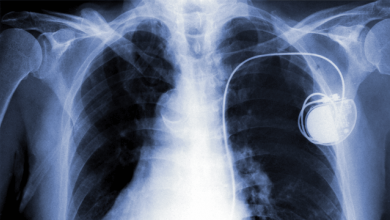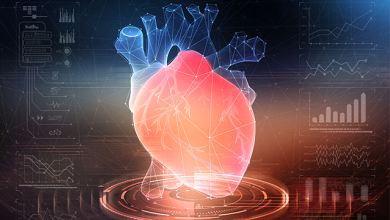Search results
Author(s):
Konstantinos D Rizas
,
Wolfgang Hamm
,
Stefan Kääb
,
et al
Added:
3 years ago
Experimental and clinical studies have demonstrated that enhanced sympathetic autonomic nervous system (SANS) activity can destabilise myocardial repolarisation,1–4 increasing vulnerability to developing fatal cardiac arrhythmias.5–8 Accordingly, assessment of SANS activity has always been a major goal for cardiac risk stratification methods. Various non-invasive methods including assessment of…
View more
Author(s):
Haran Burri
Added:
3 years ago
Remote follow-up and monitoring of patients implanted with cardiac implantable electronic devices (CIEDs) has been introduced over a decade ago, and is now indicated according to European (class IIa indication1) and American (class I indication2) guidelines. There have been high expectations that this technology will improve patient outcome, as it significantly shortens response to actionable…
View more
Author(s):
Alessio Galli
,
Francesco Ambrosini
,
Federico Lombardi
Added:
3 years ago
Since the 1960s, Holter monitoring has been a cornerstone for diagnosing suspected arrhythmias in patients of all ages.1 The most common monitoring systems allow the continuous registration of three or more leads for 24–48 hours; newer Holter monitors allow continuous electrocardiogram (ECG) registration for 2 weeks.1 Extending the time of ECG registration will increase the diagnostic yield of…
View more
Author(s):
Agnieszka Smoczynska
,
Henriëtte DM Beekman
,
Marc A Vos
Added:
3 years ago
The plasticity of the heart enables it to adapt to certain pathological insults and to maintain the cardiac output necessary to satisfy the metabolic requirements of the body.1 Although beneficial at first, this process of ventricular remodelling can have detrimental effects on cardiac function and contribute to arrhythmogenesis.2 Sudden cardiac death due to ventricular tachyarrhythmias accounts…
View more
Author(s):
Lauri Holmström
,
Frank Zijun Zhang
,
David Ouyang
,
et al
Added:
10 months ago
Device-Based Approaches to Modulate the Autonomic Nervous System and Cardiac Electrophysiology
Author(s):
William J Hucker
,
Jagmeet P Singh
,
Kimberly Parks
,
et al
Added:
3 years ago
Article
Author(s):
Stavros Stavrakis
,
Sunny Po
Added:
3 years ago
There are numerous conglomerations of autonomic ganglia on the epicardial surface of the heart, known as ganglionated plexi (GP). These GP have been shown to play a significant role in different arrhythmias, including AF. As such, GP ablation has become an adjunctive procedure in the treatment of AF. This review will present the current data on the significance of GP in arrhythmogenesis and will…
View more
Author(s):
Peter J Schwartz
Added:
3 years ago
Despite the clear improvements in clinical outcomes brought about by medical therapy with β-blockers, ACE inhibitors and aldosterone antagonists, as well as by device therapy with cardiac resynchronisation, many patients with chronic heart failure (HF) remain symptomatic despite optimal medical therapy. Symptomatic HF can have devastating consequences for the quality of life of individuals, and…
View more
Upstream Treatment of Atrial Fibrillation with n-3 Polyunsaturated Fatty Acids: Myth or Reality?
Author(s):
Francesco Orso
,
Gianna Fabbri
,
Aldo Pietro Maggioni
Added:
3 years ago
Article













 « First
« First